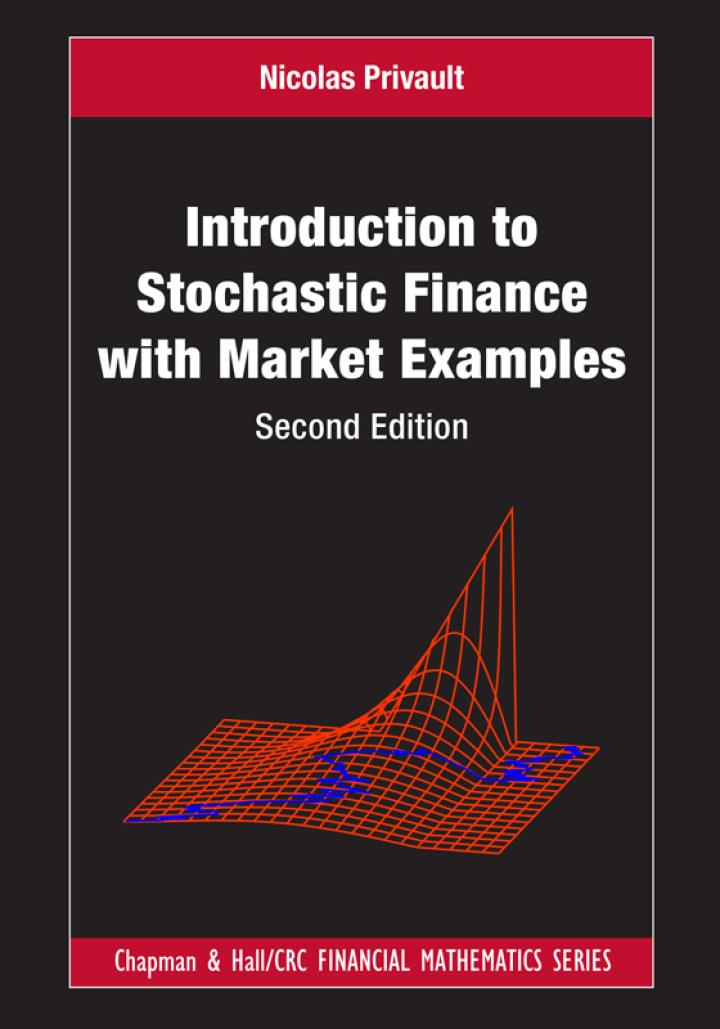Consider the discrete-time Cox-Ross-Rubinstein model with (N+1) time instants (t=0,1, ldots, N). The price (S_{t}^{0}) of the
Question:
Consider the discrete-time Cox-Ross-Rubinstein model with \(N+1\) time instants \(t=0,1, \ldots, N\). The price \(S_{t}^{0}\) of the riskless asset evolves as \(S_{t}^{0}=\pi^{0}(1+r)^{t}\), \(t=0,1, \ldots, N\). The return of the risky asset, defined as
\[ R_{t}:=\frac{S_{t}-S_{t-1}}{S_{t-1}}, \quad t=1,2, \ldots, N \]
is random and allowed to take only two values \(a\) and \(b\), with \(-1 The discounted asset price is given by \(\widetilde{S}_{t}:=S_{t} /(1+r)^{t}, t=0,1, \ldots, N\). a) Show that this model admits a unique risk-neutral probability measure \(\mathbb{P}^{*}\) and explicitly compute \(\mathbb{P}^{*}\left(R_{t}=aight)\) and \(\mathbb{P}\left(R_{t}=bight)\) for all \(t=1,2, \ldots, N\), with \(a=2 \%, b=7 \%\), \(r=5 \%\). b) Does there exist arbitrage opportunities in this model? Explain why. c) Is this market model complete? Explain why. d) Consider a contingent claim with payoff* e) Compute the portfolio strategy \[ f) Check that the above portfolio strategy is self-financing, i.e.
\[ C=\left(S_{N}ight)^{2} \]
Compute the discounted arbitrage-free price \(\widetilde{V}_{t}, t=0,1, \ldots, N\), of a self-financing portfolio hedging the claim payoff \(C\), i.e. such that \[
V_{N}=C=\left(S_{N}ight)^{2}, \quad \text { or } \quad \widetilde{V}_{N}=\widetilde{C}=\frac{\left(S_{N}ight)^{2}}{(1+r)^{N}}
\]
\left(\bar{\xi}_{t}ight)_{t=1,2, \ldots, N}=\left(\xi_{t}^{0}, \xi_{t}^{1}ight)_{t=1,2, \ldots, N}
\]
associated to \(\widetilde{V}_{t}\), i.e. such that \[
\tilde{V}_{t}=\bar{\xi}_{t} \cdot \bar{X}_{t}=\xi_{t}^{0} X_{t}^{0}+\xi_{t}^{1} X_{t}^{1}, \quad t=1,2, \ldots, N \]
\[
\bar{\xi}_{t} \cdot \bar{S}_{t}=\bar{\xi}_{t+1} \cdot \bar{S}_{t}, \quad t=1,2, \ldots, N-1 \]
Step by Step Answer:

Introduction To Stochastic Finance With Market Examples
ISBN: 9781032288277
2nd Edition
Authors: Nicolas Privault





